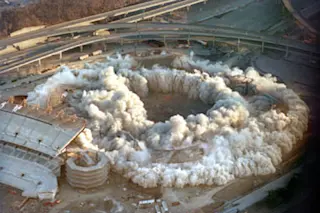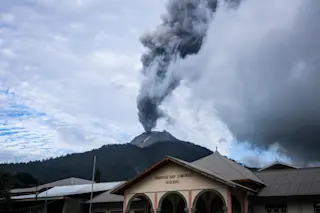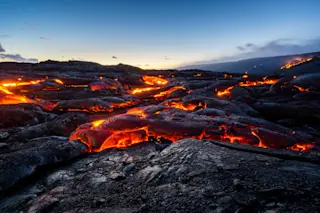Thousands of onlookers gathered on Sunday to watch and film the planned implosion of the Texas Stadium in Dallas. The 65,000-seat-stadium was home to the Dallas Cowboys for 38 years and was witness to some thrilling football moments--but all good things must come to an end. The stadium was demolished because the team moved to the new billion-dollar, state-of-the-art Cowboys Stadium last season. An 11-year-old named Casey Rogers, the winner of a local essay-writing contest, pushed the button that triggered the implosion, and thus set off 1.5 tons of explosives that brought down the stadium in a systematic manner. In the end, just three pillars stood leaning, leading Herbert Gears, mayor of the Dallas suburb of Irving where the stadium was located, to joke to AFP: "Now we've got Stonehenge." Not only were curious onlookers on hand to observe the implosion, but so were a group of seismologists. In a ...
Texas Stadium Implosion: Football's Loss, Seismologists' Gain
Witness the Texas Stadium implosion as it became an epic experiment for seismologists studying seismic waves from explosions.
More on Discover
Stay Curious
SubscribeTo The Magazine
Save up to 40% off the cover price when you subscribe to Discover magazine.
Subscribe













